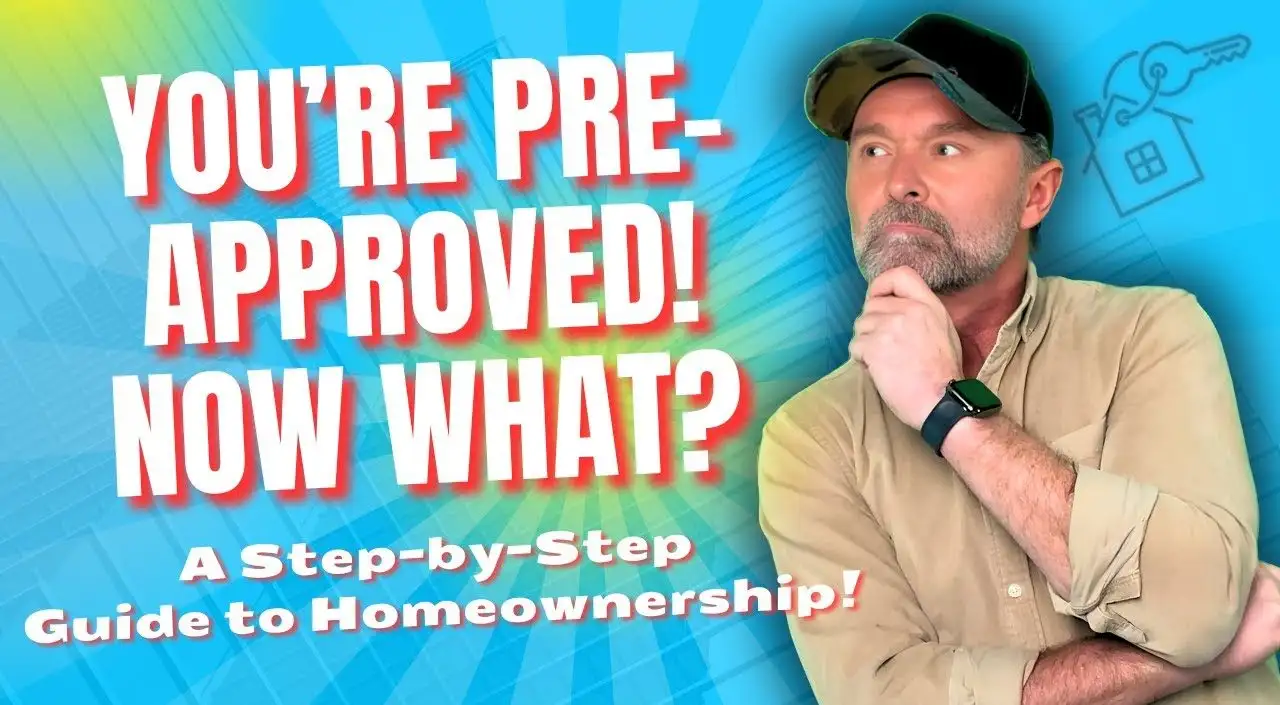What Happens After I Get Pre-Approved for a Mortgage? 12 Steps

Once you're pre-approved, find a buyer's agent, make offers, and complete your loan file. Soon, you could get the keys to your own home.
If you’ve just been pre-approved for a mortgage, congratulations. It’s a major accomplishment.
But many buyers wonder what comes next. Here’s what you can expect.
1. Get the Pre-Approval Letter
A good lender will send you a pre-approval letter as soon as you’re pre-approved. This document outlines your basic approval details, such as loan type and down payment. The loan officer should include that you are a well-qualified candidate. This gives the home seller confidence that your loan will close without a hitch.
But don’t shop for homes with this pre-approval letter, for reasons we explain later. For now, only use it when hiring your buyer’s agent. (Don’t show it to an agent who is selling a home you’re interested in, either.)
2. Hire a Buyer’s Real Estate Agent
Find a good agent who is an expert at representing buyers. Don’t use the “listing agent” (the home seller’s agent) that you happen to see at an open house. Get referrals from friends and family and do some online research.
The first question a buyer’s agent will ask is whether you are pre-approved. Luckily, you already have a pre-approval letter.
3. Shop for Homes in Your Price Range
Make a list of must-haves for your home. Conduct online searches within your pre-approved dollar amount.
Your agent will also send you interesting homes that match your criteria. Spend a day visiting homes in person. This will give you a good feel for what you like and don’t like.
4. Make an Offer with an Updated Pre-Approval Letter
When you find a suitable home, discuss with your agent the price and terms you will offer. Some agents will advise you to ask your lender for an updated pre-approval matching that exact price. That way you don't show all your cards, so to speak.
Other agents may suggest showing that you're pre-approved for more than the offer price. This shows you're a strong buyer and aren't maxed out. The seller may go with another buyer if they think you can't adjust your bid upward if needed.
Talk to your agent about the best strategy for your offer.
This is also a good time to ask for seller assistance toward closing costs.
5. Keep Making Offers
Most first-time buyers will not get their first offer accepted. This is why it’s good not to get emotionally attached from a specific house. Don’t get enticed into a bidding war and pay too much. Even in tight housing markets, there will always be more houses to buy.
6. Get an Accepted Offer
Eventually, a seller will accept your offer on a home. You will need to write your earnest money check at this time.
7. Shop Around for Rates
When you get an accepted offer, it’s a good time to shop around for rates. You don’t have to use the lender that issued your pre-approval.
However, you may want to stay with your current lender if you have a particularly difficult scenario. It could take another lender too long to approve you. If you don't close your loan on time, you could lose your earnest money.
8. Update your Loan File with your Lender
When you’ve decided on a lender, send your loan officer the purchase agreement. The lender will order an appraisal.
Submit missing or updated documentation as well. Bank statements, pay stubs, and other documentation can get too old, especially if it took some time to find a home.
The lender will guide you through additional items required by the underwriter, called “conditions.”
9. Order Inspections
As soon as you have an accepted offer, order the general home inspection plus any specialty inspections you might need (roof or termite, for instance).
Most inspections turn up at least minor issues. In any case, you can negotiate with the seller to either fix issues or contribute money toward closing costs in lieu of repairs.
Some repairs need to be completed before the lender will close the loan.
10. Sign Final Loan Documents
Soon, your loan will receive final approval from the lender. You will make an appointment to sign final loan documents at the escrow company office, your home, or wherever is convenient. You will wire or bring a cashier's check for the down payment and closing cost total.
The loan documents could be upwards of 100 pages long. It’s nearly impossible to read everything at the signing, so request a copy to review later. The most important document is the Closing Disclosure, which details your loan terms. Make sure you are getting the rate, fees, and terms that you were promised.
11. Wait for Funding Day
After signing, the loan documents go back to your lender. The closing specialist will review the file and check for any missing items.
Don’t go on vacation.
There’s always a chance you will need to supply a missing document or signature.
The loan will “fund” when everything is complete, meaning the loan is finalized and funds are issued to the seller, making you the new owner of the home.
12. Get the Keys
Usually, within a day of funding, you can get the keys and start moving in. Congratulations, you are a homeowner.
Start the Process
The best way to reach Step 12 is to start the process. Request a pre-approval from a reputable lender. In a very short time, you could own a home.







